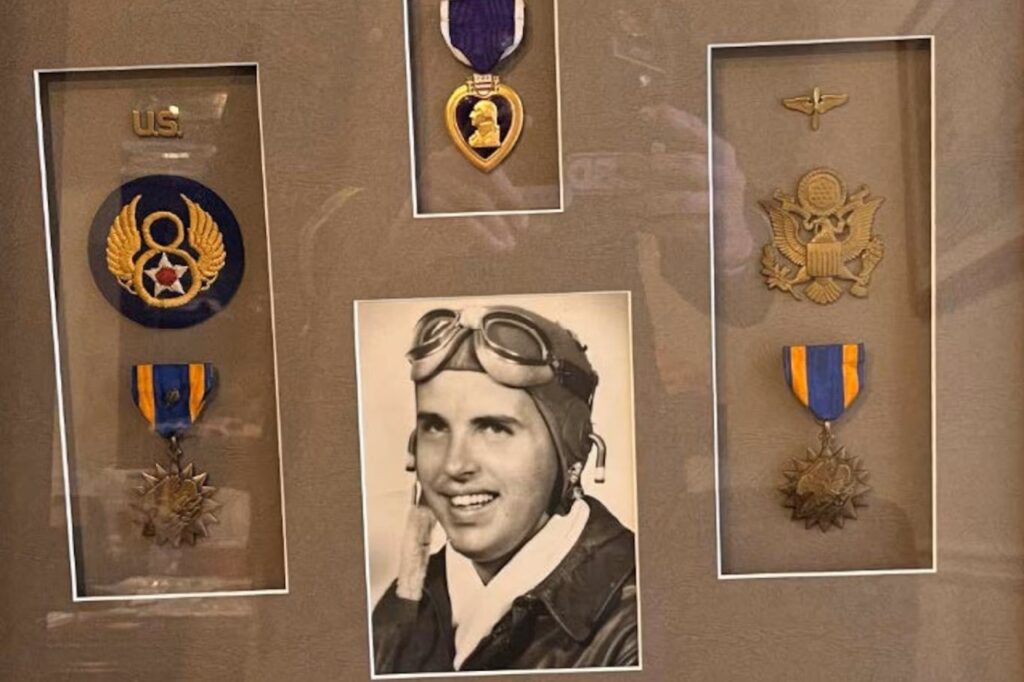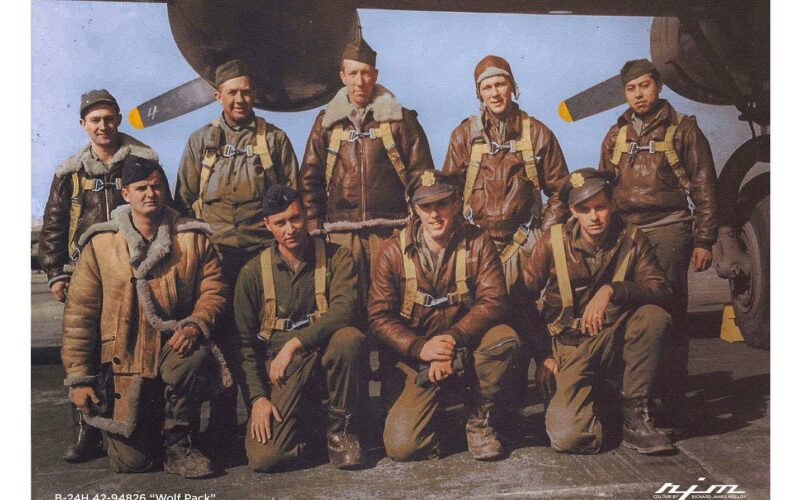A US pilot who crashed in a B-24H Liberator over England in 1944 during WWII has finally been identified after fears his remains would never be found.
In the summer of 1944 1st Lt. William B. Montgomery, 24, of Ford City, Pennsylvania, was assigned to the 844th Bombardment Squadron, 489th Bombardment Group (Heavy), Eighth Air Force.
On June 22, after a bombing raid on a German airfield in Saint-Cyr-l’École, near Versailles, France, the B-24 was hit by anti-aircraft artillery.
Montgomery managed to steer the battered aircraft across the English Channel after ordering seven airmen to parachute to safety and leaving just three crew onboard.
As Mongomery, co-pilot John Crowther and engineer, Sgt John Holoka battled to avoid catastrophe, sadly, over the fields of Arundel in West Sussex the B-24 finally came down.
According to historians the plane crashed into a ball of flames on a local farm.
While Crowther’s body was recovered, there were no remains of either Mongomery or Holoka.
“Just after my chute opened, I heard the whine of the plane going down. The first four of us landed about four miles out in the Channel and were rescued quickly,” crew member, Lt Demoyne Henderson later wrote. “The navigator landed on the beach and the other two landed a mile inland. We were not allowed to visit the plane, but it was a total loss.”
Beginning in 1946, the American Graves Registration Command (AGRC), Army Quartermaster Corps, was the organization tasked with recovering missing American personnel in the European Theater.

In November 1947, AGRC investigators searched the area of the crash site, but they did not discover the remains of any other crewmembers. Montgomery was declared non-recoverable May 10, 1950.
A local aviation archaeology group attempted to excavate the crash site in 1974 after historian Andy Saunders located the most likely area of the crash.
“I found the site in the 1970s when I spoke to an elderly local resident who remembered one of the crew was called Montgomery and he had found the bracelet with his name on and that unlocked the story,” Saunders told the Mail.
According to the local historian it was only during a chance meeting with an American major with the US Department of Defence that the story came to light again.
A number of Defense POW/MIA Accounting Agency (DPAA) investigation and recovery efforts took place in 2017 and 2019, with a June 2021 recovery mission finding possible human remains and material evidence.
To identify Montgomery’s remains, scientists from DPAA used anthropological analysis as well as material evidence.
Additionally, scientists from the Armed Forces Medical Examiner System used mitochondrial DNA (mtDNA) analysis.
Montgomery’s name is recorded on the Wall of the Missing at Cambridge American Cemetery, an American Battle Monuments Commission site in Cambridge, United Kingdom, along with others still missing from WWII. A rosette will be placed next to his name to indicate he has been accounted for.
His relatives were reportedly delighted that his remains were identified, and he was able to come home.
Montgomery will be buried at Arlington National Cemetery on a date yet to be determined.

